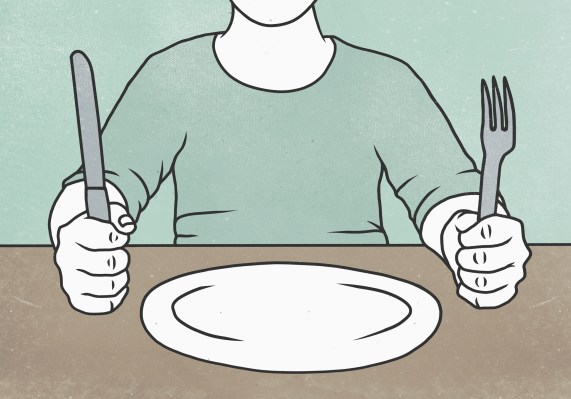Earlier today news broke that Uber is pursuing an acquisition of Grubhub. The global ride-hailing giant is worth a multiple of the American food delivery service, making the tie-up financially feasible, provided that a palatable price can be found for both parties.
The Wall Street Journal broke the news; you can read TechCrunch’s coverage of the deal here.
The deal could shake up the large, if generally unprofitable American food delivery market, a space contested by Uber’s Uber Eats service, Grubhub, DoorDash and Postmates. The combination could create the largest food delivery entity in terms of sales, changing leadership in its market and perhaps reducing competition.
Let’s unpack the deal in terms of its cost, why Uber has to pay in stock, how large a combined Uber Eats/Grubhub entity would be compared to its competition and why adjusted EBITDA helps us understand how this acquisition could give Uber’s bottom line a shot in the arm.
An all-stock purchase?
In normal times, this deal would likely be a mix of cash and stock. However, in 2020, with Uber’s market position being what it is, it’s likely that this would be an all-equity transaction. Why? Because Uber needs to conserve cash at nearly all costs. Its only historically profitable division (ride-hailing generates heavily adjusted profits) is in the tank, with ride volumes down as far as 80% in April, compared to its year-ago period.
Uber’s Uber Eats division has shown growth potential but no ability to generate profit. Therefore, Uber’s revenue growth in the near-term will be sharply unprofitable, leading to possibly raised cash consumption on a year-over-year basis. The former startup can hardly afford to fork over lots of cash as part of the Grubhub deal. Indeed, anything more than a cash sweetener would be a surprise.
If Uber does elect to pay a real piece of the deal in cash, it may indicate that its cash burn is not as steep as anticipated, that Grubhub refused to budge without it or that Uber is confident in the pace of its its ride-hailing recovery.
According to breaking reporting, Grubhub is hunting for 2.15 shares of Uber stock for each of its own shares, worth about $68 per share before the news broke per the Journal. Grubhub shares have gained 34% today to around $64 per share, while Uber has gained roughly 6% to $33.6 per share. If the ratio holds, Uber could cough up as much as $72 per share for Grubhub, a slim, but material premium over its current, deal-inflated share price.
It isn’t clear if Uber is willing to pay Grubhub’s proposed price; today’s post-news price movements could complicate the matter, given that the smaller company’s market share just took flight.
Market share
Buried deep in my inbox, waiting for just this moment, is a grip market data from Second Measure, a company that tracks credit card transactions to provide in-market data. What we have is not incredibly fresh, but February 2020 wasn’t too long ago. In the pre-COVID-19 world, here’s how domestic food delivery groups by sales ranked:
- DoorDash (79 units of “indexed sales”)
- Grubhub (60)
- Uber Eats (40)
- Postmates (19)
- Waitr (4)
As you can see, the order shakes up if you add Uber Eats and Grub together:
- Uber Eats-Grub (100)
- DoorDash (79)
Since this data set was provided to TechCrunch, total sales for each group have likely gone up and comparable sales ratios have certainly shifted. But given the huge gap that Uber Eats and Grubhub had as a combined entity a quarter ago, it’s likely that the pair as a single unit would outmatch DoorDash’s market share.
With this deal, Uber would take pole position in the American food delivery race. And that spot is worth more than you think, because Grubhub has something that Uber Eats doesn’t — a history of profits.
Profits, sorta
Grubhub once made money on a GAAP basis, which is to say, it generated net income after accounting for all expenses.
In unicorn terms, however, the firm still makes money; Grubhub generated positive adjusted EBITDA in Q1 2020 of $21.0 million. Its GAAP loss of $33.4 million shows just how massaged the adjusted EBITDA metric really is, but, it’s the accounting tool that Uber uses to report profit from its various businesses, so it’s the one that matters.
Grubhub is less profitable than it was. Competition has been tough. But with one rival gone, and more market share from which to negotiate (i.e. wring restaurants for more fees and a larger cut of revenue), Uber Eats/Grubhub could prove formidable. As a pair it would have more revenue, better economics (we presume) and lower adjusted EBITDA losses as the smaller company would offset some of Uber Eats’ stubborn deficits.
One more thing: Uber could use some of its huge market cap to buy a chunk of revenue that would dramatically curtail the collapse of its ride-hailing business. This could plug part of that gap, and at no adjusted profitability hit. It’s doubly enticing, then.
Let’s see if a workable price can be found that makes both parties excited enough to bust out the pens.
